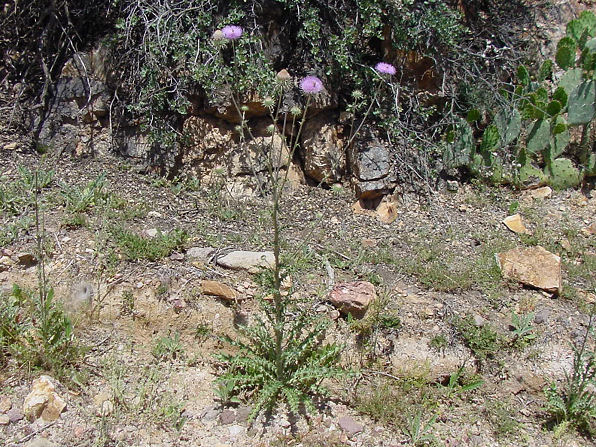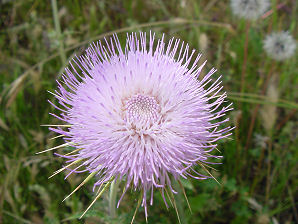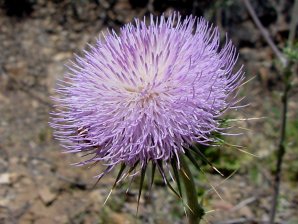Arizona Wild Flowers
Pictures, Photos, Images
Descriptions, Information, Reviews.
New Mexico Thistle, Cirsium neomexicanum.
We Are Proud Of Our SafeSurf Rating!
Click On Any Of The Following Links By Amazon.Com
For Books, & Videos About Wildflowers Of Arizona & The Southwest USA. No Obligation!
 |
| New Mexico Thistle, Cirsium neomexicanum. |
|---|
 |  |
| New Mexico Thistle. | Cirsium neomexicanum. |
|---|
New Mexico Thistle.
We wish to thank Wikipedia, the free encyclopedia for some of the information on this page. We share images and information with Wikipedia. This plant is native to the southwestern United States ( California, Nevada, Arizona, New Mexico ), particularly the Mojave Desert. It also is in the Sonoran Desert. It extends south into northern Mexico, particularly Sonora, and Baja California. It is a tall plant, routinely reaching eight feet in height. It erects a stem which may have webby fibers and long, stiff spines. The sparse leaves are greenish-gray, hairy, and very spiny. At the top of the mainly naked stems are inflorescences with one or more large flower heads with rounded bases and phyllaries covered in long, curving spines. The largest heads may be up to 5 centimeters in diameter. They are packed with white or lavender disc florets. The fruit is a flat brown achene with a long pappus which may reach 2 centimeters long. Unlike many other thistles, this species tends not to be considered a noxious weed.
Quick Notes:
Height: Growing to about 6 - 8 feet tall.
Flowers: Pink to Purple. Up to about 2 - 3 inches across surrounded by spine-tipped bracts. The lower, outer bracts point down, the upper, inner bracts point up and are slightly twisted.
Flowering Time: March - May.
Leaves: The basal leaves are oblong and form a rosette 2 - 10 inches across. The petioles of the lower leaves are narrowly winged and spiny and the upper leaves are sessile
Green leaves pinnately lobed, spiny, up to about 7 inches long.
Fruit: The fruit is an achene with a bristly pappus 0.6 to 0.8 inch long.
Stems: Normally 1, naked, erect, thinly gray-tomentose, sometimes � glabrate; branches from few - many, usually branching from above the middle, then ascending.
Found: Native to the southwestern United States ( California, Nevada, Arizona, New Mexico ); and the extreme northwest of Northern Mexico ( Sonora, and Baja California ).
Hardiness:
Soil pH requirements:
Sun Exposure:
Elevation: Can be found from 600 - 7,000 Feet.
Habitat: Commonly found in sandy to gravelly washes, and on dry, rocky slopes, mesas, canyon sides, and plains and foothills.
Miscellaneous: Flowering Photos Taken May 1, 2003 near Lake Pleasant, Arizona.
|
We Are Proud Of Our SafeSurf Rating!
Click On Any Of The Following Links By Amazon.Com
For Books, & Videos About Wildflowers Of Arizona & The Southwest USA. No Obligation!
| © 1966 - Present, Audrey, Eve, & George DeLange |
